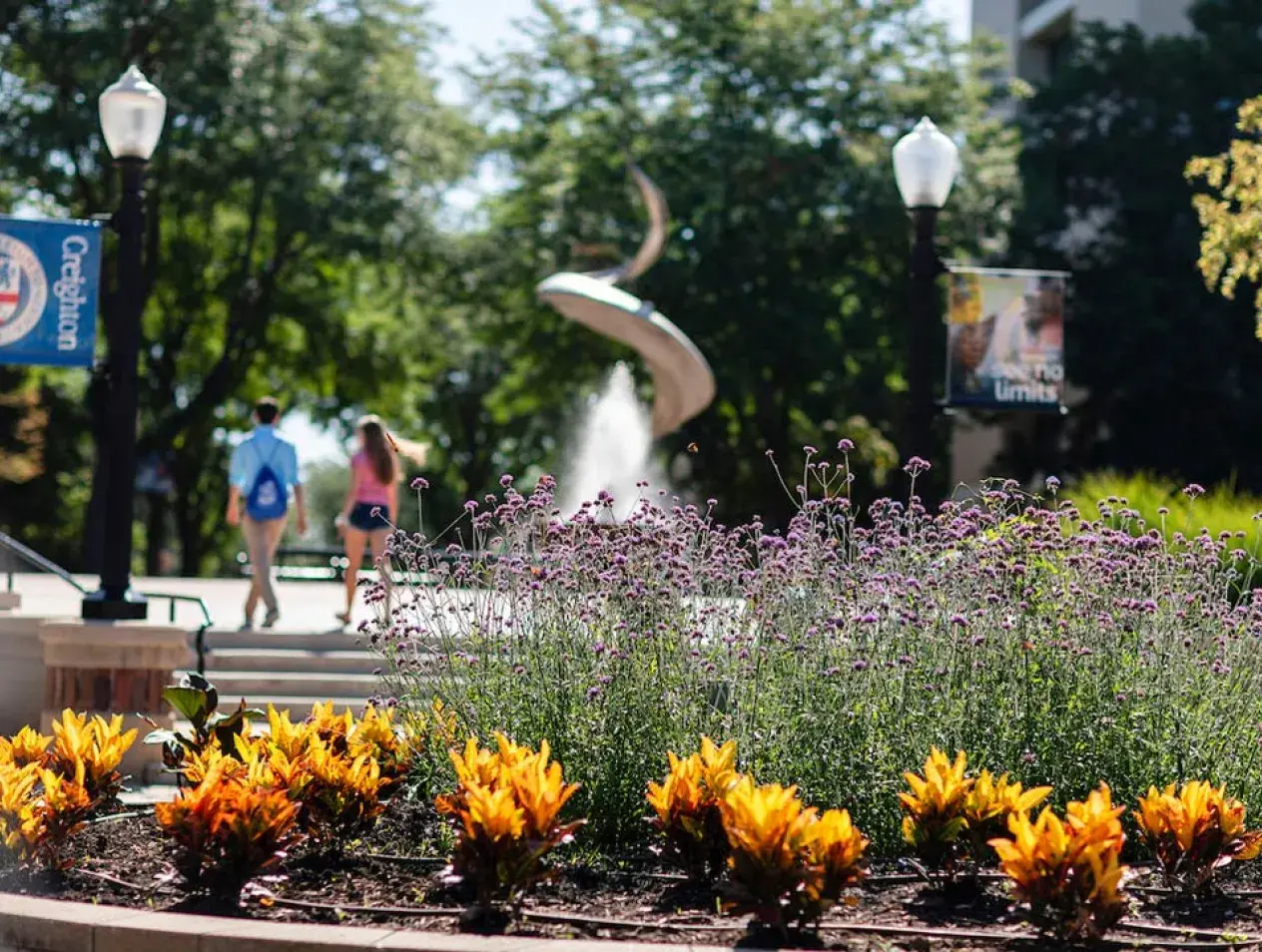
2021 Symposium
33rd Annual Symposium on Jewish Civilization
Jews and Urban Life
Sunday, October 24 - Monday, October 25, 2021
Co-hosted by
- The Klutznick Chair in Jewish Civilization, Creighton University
- The Kripke Center for the Study of Religion and Society, Creighton University
- The Harris Center for Judaic Studies, University of Nebraska-Lincoln
- The Natan and Hannah Schwalb Center for Israel & Jewish Studies, University of Nebraska at Omaha
- The Jewish Federation of Omaha
For further information about any Symposium activity, please contact Prof. Leonard Greenspoon, ljgrn@creighton.edu or 402-280-2304.
2021 Symposium Schedule
Sunday, October 24
Introductions 9:00 - 9:15 am
Session 1: 9:15 - 11:25 am | |
|---|---|
9:15 - 9:55 am | Mara W. Cohen Ioannides, Missouri State University |
10:00 - 10:40 am | Victoria Khiterer, Millersville University |
10:45 - 11:25 am | Alan Levenson, University of Oklahoma |
Lunch 12:00 - 1:00 pm
Session 2: 1:05 - 2:30 pm | |
|---|---|
1:05 - 1:45 pm | Barry L. Stiefel, College of Charleston |
1:50 - 2:30 pm | Sean Martin, Western Reserve Historical Society |
Break 2:30 – 2:50 pm
Session 3: 2:50 - 4:15 pm | |
|---|---|
2:50 - 3:30 pm | Menachem Keren-Kratz, Tel Aviv, Israel |
3:35 - 4:15 pm | Martin H. Shukert, Omaha, NE |
Session 4: Keynote 6:30 - 7:30 pm | |
|---|---|
6:30 - 7:30 pm | Ori Z. Soltes, Georgetown University |
Monday, October 25
Introductions 8:30 - 8:45 am
SESSION 5: 8:45 - 10:10 am | |
|---|---|
8:45 - 9:25 am | Joan Latchaw and David J. Peterson, University of Nebraska at Omaha |
9:30 - 10:10 am | Motti Zalkin, Ben-Gurion University |
SESSION 6: 10:15 – 11:40 am | |
|---|---|
| 10:15 - 10:55 am
| Anthony Meyer, Grand Valley State University |
| 11:00 - 11:40 am
| Theodore Albrecht, Kent State University |
Lunch 11:45 am - 12:20 pm
Session 7: 12:20 - 1:45 pm | |
|---|---|
12:20 - 1:00 pm | Steven Fine, Yeshiva University |
| 1:05 - 1:45 pm
| Gary Gilbert, Claremont McKenna College |
Generous support for the Symposium is also provided by:
- The Ike and Roz Friedman Foundation
- The Riekes Family
- Creighton University Lecture, Films, and Concerts
- The Creighton College of Arts and Sciences
- The Henry Monsky Lodge of B'nai B'rith
- The Drs. Bernard H. and Bruce S. Bloom Memorial Endowment
- Gary and Karen Javitch
Abstracts
Theodore Albrecht
Kent State University
“Vienna’s Jewish Community, 1819-1826: Glimpses from Beethoven’s Conversation Books at the Dawn of a New Era”
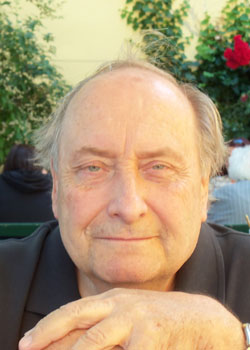
As the composer Ludwig van Beethoven (1770-1827) became increasingly deaf, he began using blank books so that his friends could write their sides of conversations, while he spoke out loud. That way, people nearby could not overhear them—especially important in Metternich’s Austria with its attentive secret police. These conversations touch upon politics, culture, religion, business, history, literature, education, current events and, occasionally, music. Discussions concerning Vienna’s Jewish community provide glimpses of everyday life that we seldom find in other sources.
In December 1819, when Frankfurt banker Solomon Rothschild arrived in Vienna, Beethoven’s circle noted his efforts to usurp the favor that local Jewish bankers—Arnstein, Eskeles, Biedermann—had traditionally had at Court. In September, 1823, Beethoven’s nephew Karl noted that there was to be a Jewish colony established on an island in the Niagara River. In the same year, Beethoven wrote a souvenir piece for the autograph book of Marie Eskeles, daughter of banker Bernhard Eskeles, and in May 1824, Bernhard bought six tickets for the premiere of Beethoven’s Ninth Symphony (with a new principal hornist, Elias Lewy). In January 1825, a Jewish committee, probably led by Eskeles, asked Beethoven to compose a choral work for the dedication of their new Tempel, scheduled for the next year, but he had to decline, even though Rothschild offered to pay for it. In September 1825, the Parisian publisher Maurice Schlesinger came to Vienna to buy Beethoven’s new String Quartet, Op. 132. He may also have hoped to win the hand of Marie Eskeles, but by that time, she was engaged to a Christian army officer. On land belonging to Biedermann, and financed by Arnstein, Eskeles, and Rothschild, the Seitenstettengasse Tempel was inaugurated on April 9, 1826, bringing with it a new era for Vienna’s Jewish Community.
Mara W. Cohen Ioannides
Missouri State University
“Jews Create Towns: An Examination of the Impact of Joseph Sondheimer on the Creation of Muskogee, Oklahoma”
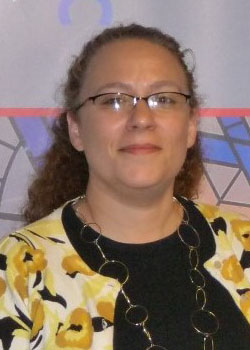
Jews are known for being urbanite merchants, but only where those in power permitted them. These rules did not apply in the New World. Here there was a need for merchants and no rules on who could live in towns and even places where there were no towns. During the Western Expansion, German Jewish immigrants traveled to towns and cities, both new and a bit older, in the newly acquired Midwest. There is also the unusual Jewish man who helped found a new town. Joseph Sondheimer arrived in the area where Muskogee, Oklahoma would eventually be in 1867 and established a trading post in Indian Territory. The railroad was built near his store and so the town was established. Sondheimer was a powerhouse in the community, not just a merchant, and his family maintained both their store and their influence for multiple generations. There were others like the Levi brothers and their brother-in-law Wolf, who arrived at the creation of Sedalia, Missouri. This paper will examine the growth of urban communities in the American Midwest and the influence Jews had on this development.
Steven Fine
Yeshiva University
“Samaritan/Jewish Competition in the Cities of Roman Palestine”
Literary and archaeological sources indicate that during late antiquity the Samaritans constituted the majority population of Caesarea Maritima. This lecture will explore the implications of this unique reality through close readings of rabbinic and Samaritan texts and archaeological remains. Parallels will be drawn to intercommunal relations in close by urban settings, including Neapolis, Beit Shean, Antioch, and Dura Europos.
Gary Gilbert
Claremont McKenna College
“Jewish Engagement in the Urban Life of the Roman World”
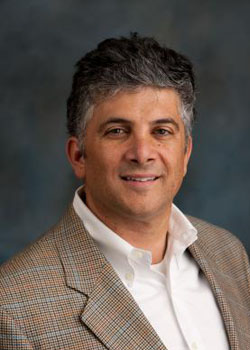
Jewish diaspora communities in the Roman and early Byzantine period (roughly first through sixth centuries CE) existed largely in urban environments, such as Alexandria in Egypt, the major cities of Western Asia Minor, and Rome. Jews, who lived as minorities in these cities, had to negotiate ways of both living apart from their non-Jewish neighbors and also as a part of the larger societies in which they lived. Through an examination of inscriptions, synagogue art and architecture, and descriptions of Jews from Greek and Latin writers, this paper explores how Jews maintained their own distinctive religious and social traditions, while at the same time participating in various forms of civic life. While the boundaries between the Jewish and civic communities were often porous, allowing Jews to enter into the civic realm and non-Jews to engage with Jews and in Jewish life, there were also limits. It is through observing both Jewish forms of engagement and non-engagement that we can better assess the place of Jews and urban life in late antiquity.
Menachem Keren-Kratz
Tel Aviv, Israel
"Jewish Cultural Centers in Small Urban Communities: The Case of Cluj-Napoca, Romania"
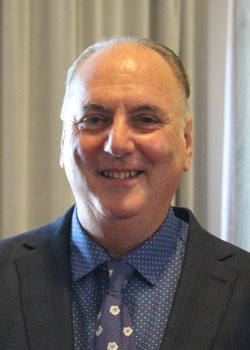
Over the past half a century, scholars have engaged with the concept of modernity and its influence on pre-Holocaust Jewish society, its culture, and its literature. When these studies refer to Jewish cultural centers, they generally speak about the large cities such as Warsaw, Vilnius, Berlin, Prague, Budapest, Vienna, New York, or Paris. This reflects the commonly accepted notion that since the dawn of time all significant political, social, and economic events transpired in urban rather than in peripheral spheres. It is likewise generally accepted that the most influential cultural trends in modern times originated in the metropolises.
Considering the latest developments in the study of modern culture in general, and Jewish cultural centers in particular, I wish to demonstrate that cultural centers also evolved in small towns located far away from any major city. Moreover, I assert that despite their cultural and geographical isolation, some small cultural centers had the potential to become leading agents of change. This will be demonstrated by focusing on the cultural center that developed in the small town of Cluj-Napoca, Romania, which for most of its history had a Jewish population of fewer than 15,000 Jews.
Victoria Khiterer
Millersville University
“Kiev as a Center of Soviet Jewish Culture in the 1920s-1930s”
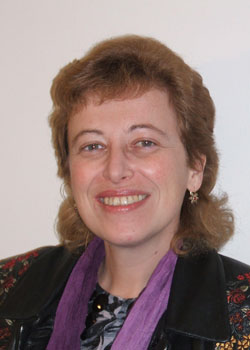
Kiev was one of the two largest centers of Yiddish culture in the Soviet Union (the other was Minsk). Several Jewish state scholarly institutions functioned in Kiev in the 1920s-1930s: the Jewish Historical-Archaeographical Commission (1919-1929), the Institute of Jewish Proletarian Culture (1929-1936), and the Department of Jewish language, Literature, and Folklore of the Ukrainian Academy of Sciences (brief title, the Department of Jewish Culture) (1936-1949). Many Yiddish writers and poets lived and worked in Kiev in the 1920s-1930s. Several Yiddish periodicals were published in Kiev; three Jewish theaters, Jewish schools, and clubs functioned in the city.
In the mid-1930s Soviet policy toward all national minorities, including Jews, suddenly changed. Instead of encouraging the development of the various national cultures of the multi-national population of the Soviet Union, the authorities decided to emphasize the dominant Russian culture and suppress all others. Most Jewish organizations and institutions were closed in Kiev and all over the Soviet Union in the second half of the 1930s. Many scholars who worked in these organizations and institutions were arrested, and some were executed. Thus, Jewish scholarly and cultural life was suppressed in the Soviet Union and was never restored to its previous dimension until the collapse of communism.
Joan Latchaw
University of Nebraska at Omaha
“Comicus the Cosmopolite: Diasporic Cosmopolitanism and the City in Mel Brook’s History of the World, Part 1”
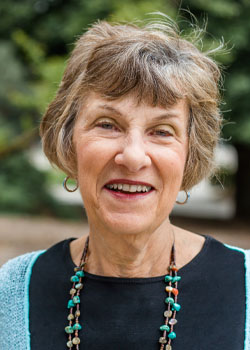
In our previous work we explored how Mel Brooks subtly draws on the Jewish tradition of zikkaron [remembrance] to redirect the tragedy of Nazi oppression into a comedy that highlights resistance and survival. This presentation further explores Brooks’ technique of remembrance, resistance, and survival in another of his movies, the very irreverent History of the World, Part I (1981). Taking a sweeping, episodic view of human civilization ranging from “The Dawn of Man” to the Roman Empire, the Spanish Inquisition, and the French Revolution, History of the World presents a tragicomic perspective on various forms of civic violence (despotism, antisemitism, and economic oppression) that refuses to recognize the Other as an equal citizen.
Juxtaposed to these regimes are a cast of urban artists who, while constantly fleeing anti-cosmopolitan authoritarianism, use their imaginative skills to survive oppression and promote cosmopolitan citizenship. As its final two sequences—an epic battle between good and evil in the backlots of Hollywood and a series of previews for History of the World, Part II (which includes “Hitler on Ice” and “Jews in Space”)—indicate, the film ultimately argues for the centrality of the arts as means of ensuring a cosmopolitan future.
Alan Levenson
University of Oklahoma
“The Cosmopolitan Jewish City: A Typology”
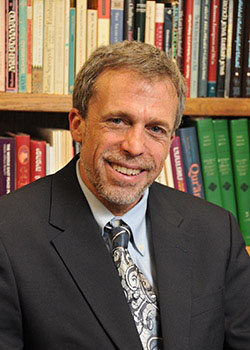
The cosmopolitan Jewish city offers an important model of diasporic Jewish civilization from antiquity to the present day. These cities share distinctive qualities beginning with relatively large populations, well established rather than new settlements, and decent to favorable political status. Additionally, Jews in these sites played diverse roles in the economy and tended to be successful. Above all, these cosmopolitan Jewish cities enjoyed gentile surroundings sufficiently receptive to permit contributions to the general culture while simultaneously generating creative expressions of Jewishness. I distinguish these cosmopolitan Jewish cities from large but insular cities (from Sura and Pumbedita to Vilna and Warsaw) and also from small town settlements (from the medieval Rhineland to Sholom Aleichem’s “Anatevka”), although they too have played a role in shaping Jewish history.
I will develop this typology via five Common Era examples: Alexandria (1st c), Cordova (11th c) Amsterdam (17c), Berlin (20c), and New York (19thc-Present). Not every site shared these characteristics equally, but collectively they comprise a central mode of Jewish urban life and civilization. This typology contains a homily: the notion that only parochial models from the Jewish past yield viable models for the Jewish future is demonstrably false and resurrects a lachrymose conception that deserves to remain buried.
Sean Martin
Western Reserve Historical Society
“Die Yiddishe Velt: Yiddish and Cultural Assimilation in Cleveland’s Jewish World”
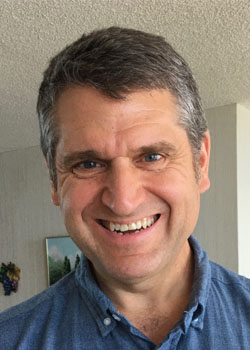
Published between 1911 and 1952, Cleveland’s Die Yiddishe Velt [sic, The Jewish World] was the city’s principal Yiddish-language newspaper and appeared as a daily from 1911 to 1945. Edited by Samuel Joshua Rocker, a scholar of Jewish philosophy and mysticism, Die Yiddishe Velt educated its immigrant readers through a presentation of both Jewish and secular traditions. This paper will draw special attention to Rocker’s editorials from 1911 through the late 1930s, in an effort to learn more about how the newspaper encouraged readers to adopt an American identity while maintaining strong ties to the Jewish community.
Rocker’s writing offers a view into the world of European Jewish culture that was more direct than that presented in the English-language Jewish Review and Observer and The Jewish Independent, his paper’s contemporary competitors. Rocker described a European Jewish world that his immigrant readers had recently experienced and one they believed their European relatives would continue to experience as an ongoing source of Jewish life. Using the press and archival sources from the Rocker family, the Yiddish journalist Leon Wiesenfeld, and local Jewish organizations, this paper will evaluate the role of the local Yiddish press in communal life and its influence on its readers.
Anthony Meyer
Grand Valley State University
“Urbanizing Jews: Agriculture, Slave Codes, and the Byzantine Empire”
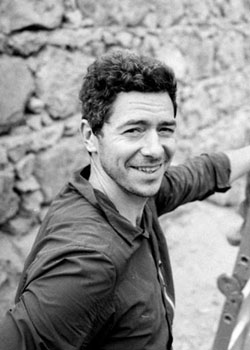
Despite long cultural and religious ties to agriculture, attested in the literary and archaeological record of ancient Israel and early Judaism, it is a historical phenomenon that Jews became a nearly completely urban people by the late medieval period. Up to 95% have remained in urban occupations to the present day (Chiswick 2005). Scholars have debated extensively whether this transformation from farming to urban life was driven by internal or external factors, directly or indirectly, and if any one factor—education/literacy (Botticini and Eckstein), halachic requirements (Weber and Kuznets), or restrictions on agricultural activity (Roth and Schiendlin)—shaped Jewish civilization more than others.
Regardless of divergent explanations, many share the view that the origins of this complex urbanization process can be traced to Byzantine rule of Palestine (4th-7th centuries CE). A few central questions emerge from this period. How far did Byzantine imperial legislation limit Jewish agricultural activity, thereby sparking the urbanization process? Does the evidence from Jewish farms in Palestine cohere with official Byzantine legal structures? I review the archaeological record of Jewish farm life from the time of Constantine to the publication of Codex Theodosianus, roughly 312¬–438 CE, including farming installations at Qatsrin, Kafr Naffakh, Chorazin, Horvat Sumaqa, Shiqmona, and Khirbet Susiya. I compare and contrast these with a few major Byzantine (mostly Christian) farmhouses. In conclusion, I reflect on how the evidence from this early period can be integrated in more nuanced ways into our views of the remarkable transformation of Jews from rural to urban life.
David J. Peterson
University of Nebraska at Omaha
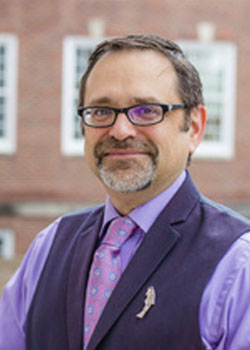
Martin H. Shukert
Omaha, NE
“City in the Garden, Garden in the City: Clarence Stein, Moshe Safdie, and the Design of Urban Reform”
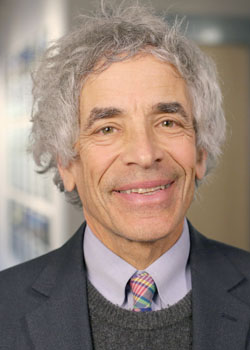
While God gave the natural world to humankind to guard and grow, the city is the creation of people, and it is appropriate that Jews have contributed tremendously to the perfection of that most human invention. This paper and presentation will compare the philosophy and work of two great Jewish urban designers who approached the reform of cities at two ends of the 20th century and from two diametrically different but ultimately converging perspectives, both of which are highly relevant to the form of the post-Covid community.
Clarence Stein, born in Rochester, New York but mostly identified with the New York City metropolitan area, grew up in a Jewish family heavily invested in the Ethical Culture movement. Influenced by Ebenezer Howard’s Garden City concepts, he was a leading member of a group of reformers devoted to addressing the public health and life quality challenges of late 19th and early 20th century New York’s dense tenement neighborhoods by developing garden suburbs and new towns – moving the city into the garden. The development of his ultimate project, the new town of Radburn, New Jersey, was cut short by the 1929 stock market crash, but its completed first neighborhood remains one of the landmarks of American city planning. The Garden City program also influenced the design of Tel Aviv, and the paper will also consider this relationship.
Moshe Safdie, born in Haifa, gained world fame as the 27-year old-designer of Habitat for Montreal’s Expo 67 world’s fair. Now recognized as one of the great architects of this era, Safdie applied the design and form of Jerusalem and the Arab village to the problem of creating humane and affordable cities through modular methods and the introduction of green space into high density, sustainable environments – bringing the garden into the city. In common with Stein’s Radburn, his largest urban development project in the United States, Coldspring in Baltimore, was not fully realized, but represents his approach to community development. This consideration of these comparative and complementary approaches is especially important as we contemplate the changes that the aftermath of covid-19 and “social distancing” might bring to cities – and what these two great community builders, whose work grew from their formative Jewish backgrounds, tell us about our drive to perfect the city.
Ori Z. Soltes
Georgetown University
“A Tale of Two Cities: Jewish Creativity in Venice and Prague”
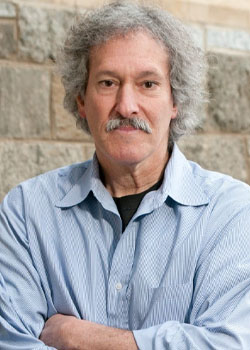
Jewish history is fraught with paradox, particularly as it pertains to acceptance and rejection, mainstreaming and marginalization by the majority communities among whom Jews have dwelled. Jews have, in turn, simultaneously turned from and embraced elements of majority culture, at times, by particular paradox, in the visual expression that is stereotypically disassociated from Jewish culture.
Among the many cities across the world where this reality has expressed itself with particular vehemence are Venice and Prague. The first has imprinted itself in worldwide awareness for its contribution of the term ghetto to our vocabulary—referring to the part of the city into which Jews were confined in 1516. The paradox is an intense and diverse culture that over the next few centuries produced, among other elements, an array of theatrically designed synagogues as foci for a uniquely shaped community of linguistically and liturgically distinct communities.
During this time of paradoxical Jewish confinement and creativity in Venice, Prague’s Jewish community was being shaped by a more informal confinement, while becoming a magnet for mysticism and messianic hopes and, later, musical aspirations. From architectural peculiarities of the AltNeuShul and the figure of Judah Loew and his Golem to the writing of Franz Kafka and the music of Hans Krasa, Prague proved to be a crucible for the production of an astonishing array of Jewish culture.
Each of these two cities has offered an extraordinary legacy that stands out among the many important legacies of urbanized Jewry across history and geography. The concentrated topography of each allowed for developments that offer an intensified double symbol for the uniqueness of Jewish self-definition and being-in-the-world.
Barry L. Stiefel
College of Charleston
“Preserving Jewish: The Contributions of Jews in the Historic Preservation Field”
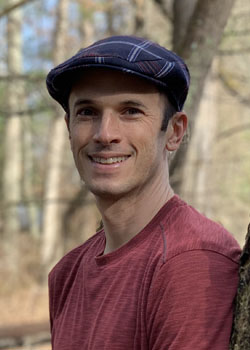
Architectural historians and preservationists have done numerous studies on the preservation of historic Jewish sites, especially urban synagogues. But there has not yet been a history on and about Jews doing historic preservation, whether on specific Jewish places or America historic sites in general. This paper will contribute a rich history on the Jewish experience in preservation in the United States. It is centered on urban areas, since this is where Jews frequently resided as well as where many early preservation efforts began.
Examples to be covered are Judah Touro’s contributions to the Battle of Bunker Hill Monument in the 1840s, near Boston; Lee Cohen Harby’s leading the Daughter of the American Revolution to save the Old Exchange Building in Charleston, South Carolina between 1898 and 1918; and Harmon H. Goldstone’s chairmanship on the New York City Landmarks Preservation Commission, which stood up against developers in the infamous 1978 Penn Central Transportation Co. v. New York City Supreme Court ruling that upheld historic preservation as a public good that municipalities can regulate without violating (within reason) the 5th Amendment “takings” clause. This paper will look at what preservation projects Jews gravitated toward and why, addressing issue of nationalistic and ethnic identities as well as community engagement and public perceptions.
Motti Zalkin
Ben-Gurion University
“‘My heart in the shtetl while my head in the department store’ – The Impact of Urbanization on the character of the ‘New Urban Jew’ in the Baltic Area”

On the eve of World War II, the Jewish community in Warsaw, the largest community in the Jewish world at that time, numbered about 300,000. Less than a century before, this community numbered only 40,000 Jews. This impressive growth is an example of the rapid urbanization process that Jews in Eastern Europe underwent in the second half of the nineteenth century and in the first two decades of the twentieth century. As part of this process, the focus of Jewish life in this area shifted from rural and small urban communities to the larger urban communities, such as Warsaw, Vilnius, Odessa, Minsk, Krakow, Kharkov and Lodz. This process, which was accompanied by far reaching psychological and conscious implications, was known to have substantial effects not only on the social, educational, professional, economic, and family life of the contemporary Jew's world, but also on the immigration processes that intensified towards the end of the nineteenth century and on the creation and the character of the major Jewish urban centers in North and South America, Western Europe, and Eretz Israel.
However, the study of the history of Eastern European Jews in modern times has little focus on this phenomenon, while focusing on the ideological, religious, and political aspects of this society, as well as on questions such as the relationship with the non-Jewish population and the great overseas immigration. Even researchers who did pay attention to this process, such as Arcadius Kahan, focused mainly on the Jewish urbanization processes in central Europe. In my lecture, I will focus on the question of the process of designing the social, economic, political, and religious character of the "new urban Jew" in late nineteenth century Eastern Europe. As a case study I will use two of the new urban communities in this area that developed on a different social and cultural background and played a major, yet similar, role in the history of the Jews in the Baltic area – the Kaunas Jewish community in central Lithuania and the Riga Jewish community in Latvia.

